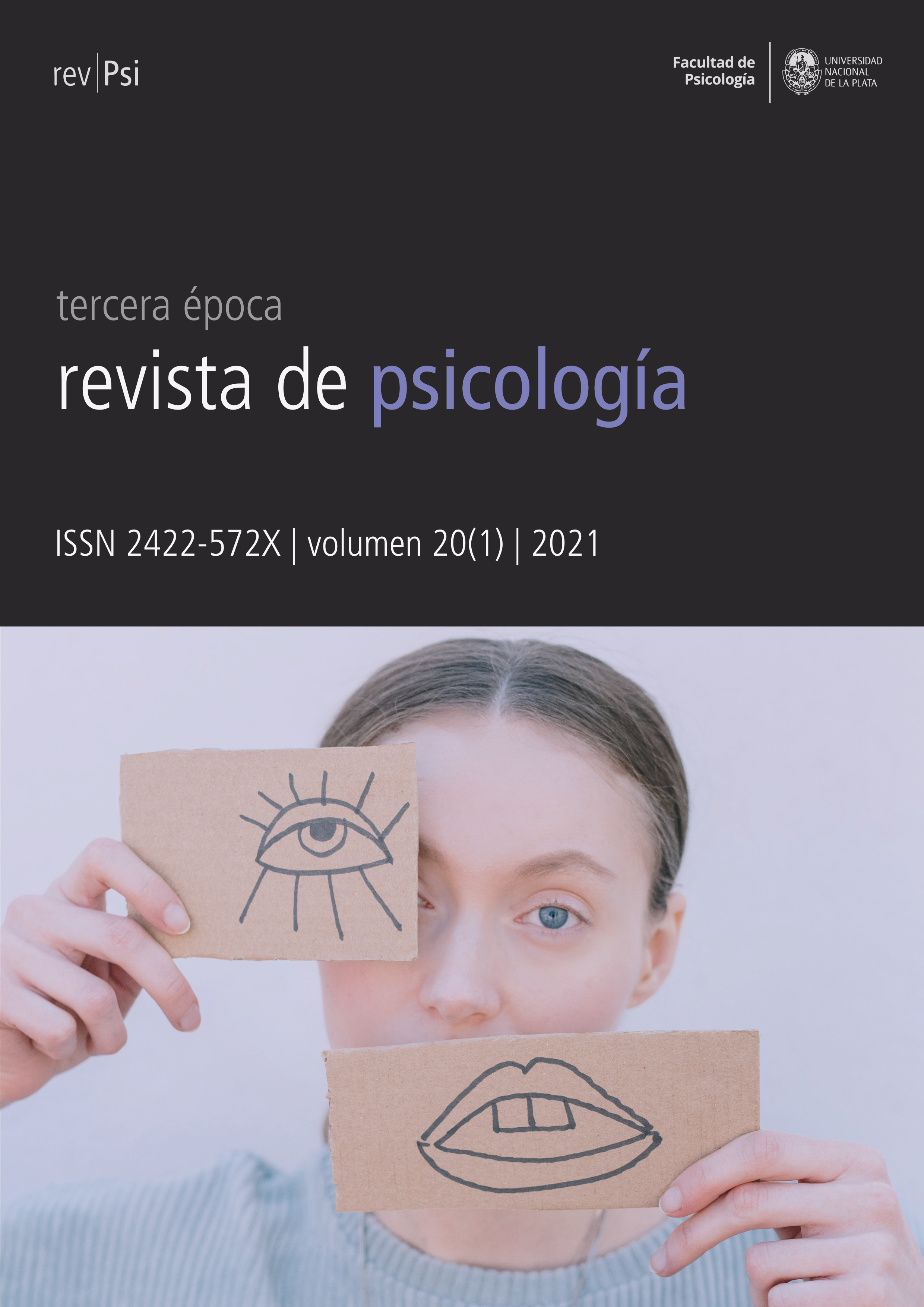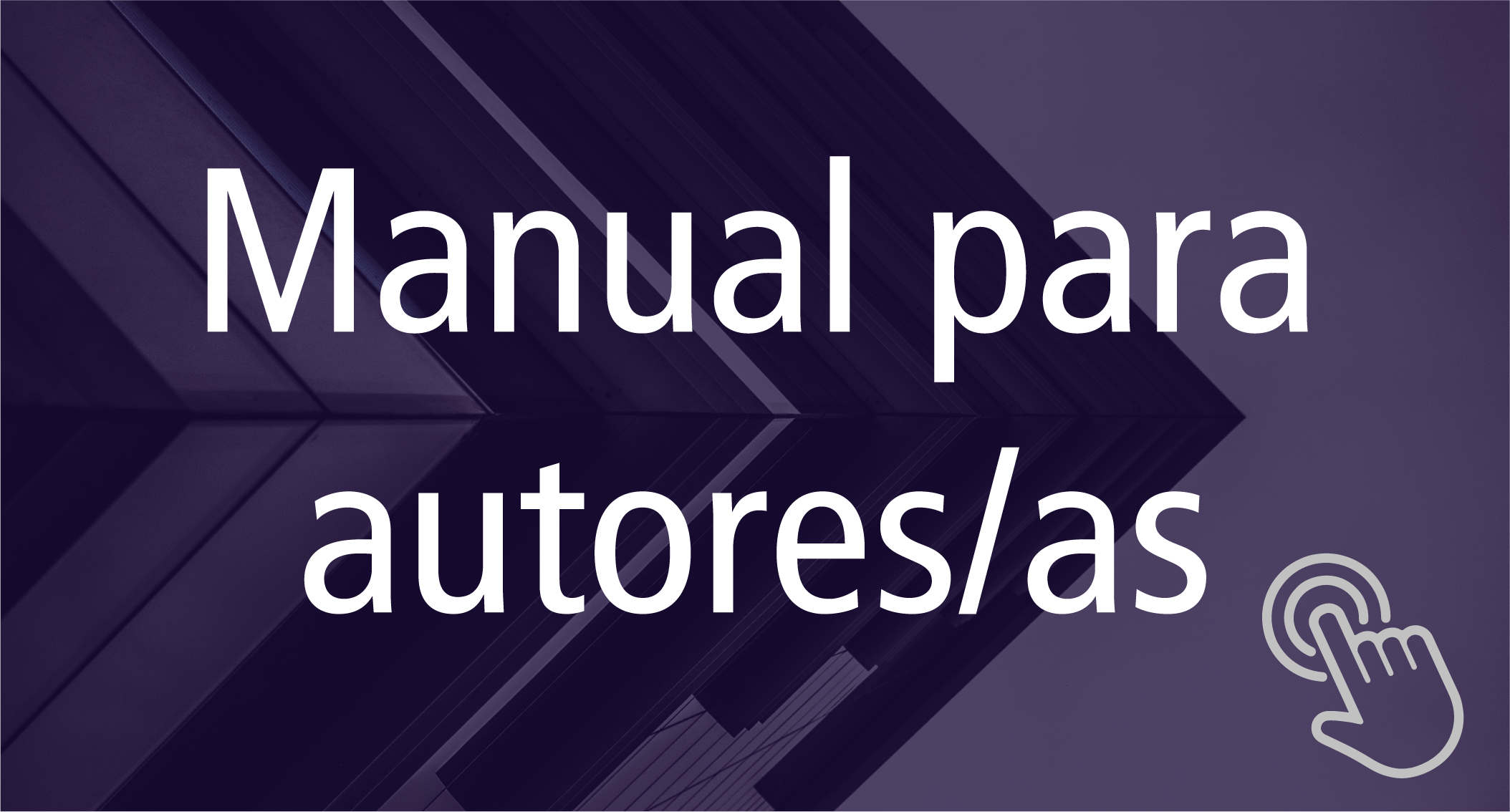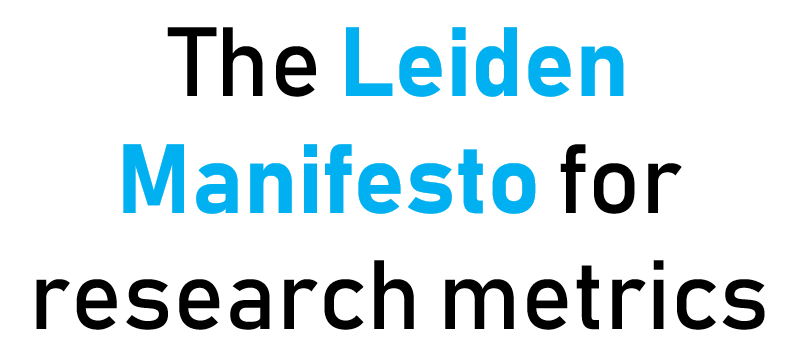Memoria emocional en niñas y niños preescolares de diferentes condiciones socio-ambientales
DOI:
https://doi.org/10.24215/2422572Xe097Palabras clave:
memoria, emociones, niñas y niños, condiciones socio-ambientales, desarrolloResumen
La memoria de largo término de información con valencia positiva o negativa se denomina memoria emocional. Existen diversos factores individuales y socio-ambientales que se asocian a variaciones en la evocación de la memoria de niñas y niños preescolares. En este estudio se analizó el desempeño en una tarea de memoria emocional de niñas y niños de 4 años provenientes de hogares con diferentes condiciones socio-ambientales. Se comparó la información obtenida a través del recuerdo libre y el reconocimiento de las imágenes presentadas previamente. Se encontraron diferencias en el recuerdo libre de las imágenes negativas y en el total de las imágenes recordadas, donde las niñas recordaron mayor cantidad de imágenes, que los niños. No se encontraron diferencias en el reconocimiento de las imágenes en función del sexo de las/os participantes, aunque sí se encontró que el grupo con condiciones socio-ambientales desfavorables presentó mayor reconocimiento de imágenes neutras que el de condiciones favorables.
Referencias
Bauer, P. J., Larkina, M. y Doydum, A. O. (2012). Explaining variance in long-term recall in 3-and 4-year-old children: The importance of post-encoding processes. Journal of Experimental Child Psychology, 113(2), 195-210. https://doi.org/10.1016/j.jecp.2012.05.006.
Baugerud, G. A. y Melinder, A. (2012). Maltreated children's memory of stressful removals from their biological parents. Applied Cognitive Psychology, 26(2), 261-270. https://doi.org/10.1002/acp.1817.
Bishop, S., Dalgleish, T. y Yule, W. (2004). Memory for emotional stories in high and low depressed children. Memory, 12(2), 214-230. https://doi.org/10.1080/09658210244000667.
Blair, C., Granger, D. A., Willoughby, M., Mills‐Koonce, R., Cox, M., Greenberg, M. T., Kivlighan, K. T., Fortunato, C. K. y FLP Investigators. (2011). Salivary cortisol mediates effects of poverty and parenting on executive functions in early childhood. Child Development, 82(6), 1970-1984. https://doi.org/10.1111/j.1467-8624.2011.01643.x.
Bradley, M. M. y Lang, P. J. (2000). Measuring emotion: Behavior, feeling, and physiology. In R. Lane y L. Nadel (Eds.), Cognitive neuroscience of emotion (pp. 242–276). Oxford University Press.
Bradley, R. H. y Corwyn, R. F. (2002). Socioeconomic status and child development. Annual Review of Psychology, 53(1), 371-399. https://doi.org/10.1146/annurev.psych.53.100901.135233.
Brainerd, C. J., Holliday, R. E., Reyna, V. F., Yang, Y. y Toglia, M. P. (2010). Developmental reversals in false memory: Effects of emotional valence and arousal. Journal of Experimental Child Psychology, 107(2), 137-154. https://doi.org/10.1016/j.jecp.2010.04.013.
Brainerd, C. J., Stein, L. M., Silveira, R. A., Rohenkohl, G. y Reyna, V. F. (2008). How does negative emotion cause false memories? Psychological Science, 19(9), 919-925. https://doi.org/10.1111/j.1467-9280.2008.02177.x
Bremner, J. D. y Narayan, M. (1998). The effects of stress on memory and the hippocampus throughout the life cycle: Implications for childhood development and aging. Development and Psychopathology, 10(4), 871-885. https://doi.org/10.1017/S0954579498001916
Canli, T., Desmond, J. E., Zhao, Z. y Gabrieli, J. D. (2002). Sex differences in the neural basis of emotional memories. Proceedings of the National Academy of Sciences, 99(16), 10789-10794. https://doi.org/10.1073/pnas.162356599
Channell, M. M. y Barth, J. M. (2013). Individual differences in preschoolers’ emotion content memory: The role of emotion knowledge. Journal of Experimental Child Psychology, 115(3), 552-561. https://doi.org/10.1016/j.jecp.2013.01.012
Cocenas-Silva, R., Bueno, J. L. O. y Droit-Volet, S. (2013). Emotion and long-term memory for duration: resistance against interference. Behavioural Processes, 97, 6-10. https://doi.org/10.1016/j.beproc.2013.03.010
Cordon, I. M., Melinder, A. M., Goodman, G. S. y Edelstein, R. S. (2013). Children’s and adults’ memory for emotional pictures: Examining age-related patterns using the Developmental Affective Photo System. Journal of Experimental Child Psychology, 114(2), 339-356. https://doi.org/10.1016/j.jecp.2012.08.004
Courage, M. y Cowan, N. (Eds.). (2008). The development of memory in infancy and childhood. Psychology Press.
Davidson, D., Luo, Z. y Burden, M. J. (2001). Children's recall of emotional behaviours, emotional labels, and nonemotional behaviours: Does emotion enhance memory? Cognition and Emotion, 15(1), 1-26. https://doi.org/10.1080/02699930125794
Davidson, M. C., Amso, D., Anderson, L. C. y Diamond, A. (2006). Development of cognitive control and executive functions from 4 to 13 years: Evidence from manipulations of memory, inhibition, and task switching. Neuropsychologia, 44(11), 2037-2078. https://doi.org/10.1016/j.neuropsychologia.2006.02.006
Eisen, M. L., Goodman, G. S., Diep, J., Lacsamana, M. T., Olomi, J., Goldfarb, D. y Quas, J. A. (2019). Effects of interviewer support on maltreated and at-risk children’s memory and suggestibility. International Journal on Child Maltreatment: Research, Policy and Practice, 2, 55-78. https://doi.org/10.1007/s42448-019-00016-7
Fernando, J. W., Kashima, Y. y Laham, S. M. (2017). Alternatives to the fixed-set model: A review of appraisal models of emotion. Cognition and Emotion, 31(1), 19-32. https://doi.org/10.1080/02699931.2015.1074548
Fivush, R. (2019). Sociocultural developmental approaches to autobiographical memory. Applied Cognitive Psychology, 33(4), 489-497. https://doi.org/10.1002/acp.3512
Floccia, C., Delle Luche, C., Lepadatu, I., Chow, J., Ratnage, P. y Plunkett, K. (2020). Translation equivalent and cross-language semantic priming in bilingual toddlers. Journal of Memory and Language, 112, 104086. https://doi.org/10.1016/j.jml.2019.104086
Gathercole, S. E., Dunning, D. L., Holmes, J. y Norris, D. (2019). "Working memory training involves learning new skills": Corrigendum. Journal of Memory and Language, 106, 203. https://doi.org/10.1016/j.jml.2019.02.004
Gershoff, E. T., Grogan‐Kaylor, A., Lansford, J. E., Chang, L., Zelli, A., Deater‐Deckard, K. y Dodge, K. A. (2010). Parent discipline practices in an international sample: Associations with child behaviors and moderation by perceived normativeness. Child Development, 81(2), 487-502. https://doi.org/10.1111/j.1467-8624.2009.01409.x
Goodman, G. S., Quas, J. A., Batterman-Faunce, J. M., Riddlesberger, M. M. y Kuhn, J. (1997). Children's reactions to and memory for a stressful event: Influences of age, anatomical dolls, knowledge, and parental attachment. Applied Developmental Science, 1(2), 54-75. https://doi.org/10.1207/s1532480xads0102_1
Guzm·n-Ramos, K., Venkataraman, A., Morin, J. P., Osorio-GÛmez, D. y Berm˙dez-Rattoni, F. (2018). Differential requirement of de novo Arc protein synthesis in the insular cortex and the amygdala for safe and aversive taste long-term memory formation. Behavioural Brain Research, 342, 89-93. https://doi.org/10.1016/j.bbr.2018.01.006
Hostinar, C. E., Johnson, A. E. y Gunnar, M. R. (2015). Early social deprivation and the social buffering of cortisol stress responses in late childhood: An experimental study. Developmental Psychology, 51(11), 1597-1608. https://doi.org/10.1037/dev0000029
Hughes, C., Ensor, R., Wilson, A. y Graham, A. (2009). Tracking executive function across the transition to school: A latent variable approach. Developmental Neuropsychology, 35(1), 20-36. https://doi.org/10.1080/87565640903325691
Humphreys, M. S., Li, Y. R., Burt, J. S. y Loft, S. (2020). How semantic processing affects recognition memory. Journal of Memory and Language, 113, 104109. https://doi.org/10.1016/j.jml.2020.104109
Jaume, L. C., Ruetti, E. M., Segretin, M. S. y Lipina, S. J. (2016). Efectos de la edad sobre la valoraciÛn emocional durante la etapa preescolar. Anuario de Investigaciones de la Facultad de PsicologÌa - Universidad de Buenos Aires, 23(2), 281-287.
Justel, N., Psyrdellis, M. y Ruetti, E. (2013). ModulaciÛn de la memoria emocional: una revisiÛn de los principales factores que afectan los recuerdos. Suma PsicolÛgica, 20(2), 163-174.
Kensinger, E. A. y Corkin, S. (2003). Memory enhancement for emotional words: Are emotional words more vividly remembered than neutral words? Memory & Cognition, 31(8), 1169-1180. https://doi.org/10.3758/BF03195800
Kensinger, E. A. y Corkin, S. (2004). Two routes to emotional memory: Distinct neural processes for valence and arousal. Proceedings of the National Academy of Sciences, 101(9), 3310-3315. https://doi.org/10.1073/pnas.0306408101
Kuppens, P., Tuerlinckx, F., Russell, J. A. y Barrett, L. F. (2013). The relation between valence and arousal in subjective experience. Psychological bulletin, 139(4), 917. https://doi.org/10.1037/a0030811
Lacunza, A. B., Contini, N. y Castro Solano, A. (2010). Las habilidades cognitivas en niÒos preescolares. Un estudio comparativo en un contexto de pobreza. Acta Colombiana de PsicologÌa, 13(1), 25-34.
Langnes, E., Vidal-PiÒeiro, D., Sneve, M. H., Amlien, I. K., Walhovd, K. B. y Fjell, A. M. (2019). Development and decline of the hippocampal long-axis specialization and differentiation during encoding and retrieval of episodic memories. Cerebral Cortex, 29(8), 3398-3414. https://doi.org/10.1093/cercor/bhy209
Leventon, J. S., Stevens, J. S. y Bauer, P. J. (2014). Development in the neurophysiology of emotion processing and memory in school-age children. Developmental Cognitive Neuroscience, 10, 21-33. https://doi.org/10.1016/j.dcn.2014.07.007
Lipina S. J., Martelli M. I., Vuelta B., Injoque-Ricle I. y Colombo J. A. (2004). Pobreza y desempeÒo ejecutivo en alumnos preescolares de la ciudad de Buenos Aires (Argentina). Interdisciplinaria, 21, 53-193.
Lupien, S. J., McEwen, B. S., Gunnar, M. R. y Heim, C. (2009). Effects of stress throughout the lifespan on the brain, behaviour and cognition. Nature Reviews Neuroscience, 10(6), 434-445. https://doi.org/10.1038/nrn2639
Lupien, S. J., Wilkinson, C. W., BriËre, S., MÈnard, C., Kin, N. N. Y. y Nair, N. P. V. (2002). The modulatory effects of corticosteroids on cognition: studies in young human populations. Psychoneuroendocrinology, 27(3), 401-416. https://doi.org/10.1016/S0306-4530(01)00061-0
Massol, S., Vantaggio, S. y Chainay, H. (2020). Emotional Modulation of Episodic Memory in School-Age Children and Adults: Emotional Items and Their Associated Contextual Details. Journal of Experimental Psychology: General, 149(9), 1684–1703. http://dx.doi.org/10.1037/xge0000744
McManis, M. H., Bradley, M. M., Berg, W. K., Cuthbert, B. N. y Lang, P. J. (2001). Emotional reactions in children: Verbal, physiological, and behavioral responses to affective pictures. Psychophysiology, 38(2), 222–231. https://doi.org/10.1111/1469-8986.3820222
Montirosso, R., Peverelli, M., Frigerio, E., Crespi, M. y Borgatti, R. (2010). The development of dynamic facial expression recognition at different intensities in 4‐to 18‐year‐olds. Social Development, 19(1), 71-92. https://doi.org/10.1111/j.1467-9507.2008.00527.x
Moradi, A. R., Taghavi, R., Neshat-Doost, H. T., Yule, W. y Dalgleish, T. (2000). Memory bias for emotional information in children and adolescents with posttraumatic stress disorder: A preliminary study. Journal of Anxiety Disorders, 14(5), 521-534. https://doi.org/10.1016/S0887-6185(00)00037-2
Nelson, N. L. y Russell, J. A. (2016). Building emotion categories: Children use a process of elimination when they encounter novel expressions. Journal of Experimental Child Psychology, 151, 120-130. https://doi.org/10.1016/j.jecp.2016.02.012
Noel, M., Chambers, C. T., McGrath, P. J., Klein, R. M. y Stewart, S. H. (2012a). The influence of children’s pain memories on subsequent pain experience. PainÆ, 153(8), 1563-1572. https://doi.org/10.1016/j.pain.2012.02.020
Noel, M., McMurtry, C. M., Chambers, C. T. y McGrath, P. J. (2012b). Children’s memory for painful procedures: the relationship of pain intensity, anxiety, and adult behaviors to subsequent recall. Journal of Pediatric Psychology, 35(6), 626-636. https://doi.org/10.1093/jpepsy/jsp096
÷hman, A., Flykt, A. y Esteves, F. (2001). Emotion drives attention: detecting the snake in the grass. Journal of Experimental Psychology: General, 130(3), 466-478. https://doi.org/10.1037/0096-3445.130.3.466
Ohrmann, P., Pedersen, A., Braun, M., Bauer, J., Kugel, H., Kersting, A., Domschke, K., Deckert, J. y Suslow, T. (2010). Effect of gender on processing threat‐related stimuli in patients with panic disorder: sex does matter. Depression and Anxiety, 27(11), 1034-1043. https://doi.org/10.1002/da.20721
Otgaar, H., Candel, I. y Merckelbach, H. (2008). Children’s false memories: Easier to elicit for a negative than for a neutral event. Acta Psychologica, 128(2), 350-354. https://doi.org/10.1016/j.actpsy.2008.03.009
Parsafar P. y Davis E. L. (2018). Fear and anxiety. En H. Lench (Eds.), The function of emotions. https://doi.org/10.1007/978-3-319-77619-4_2
Pessoa, L., McKenna, M., Gutierrez, E. y Ungerleider, L. G. (2002). Neural processing of emotional faces requires attention. Proceedings of the National Academy of Sciences, 99(17), 11458-11463. https://doi.org/10.1073/pnas.172403899
Quas, J. A., Rush, E. B., Yim, I. S., Edelstein, R. S., Otgaar, H. y Smeets, T. (2016). Stress and emotional valence effects on children versus adolescents’ true and false memory. Memory, 24(5), 696-707. https://doi.org/10.1080/09658211.2015.1045909
Quas, J. A. y Lench, H. C. (2007). Arousal at encoding, arousal at retrieval, interviewer support, and children's memory for a mild stressor. Applied Cognitive Psychology: The Official Journal of the Society for Applied Research in Memory and Cognition, 21(3), 289-305. https://doi.org/10.1002/acp.1279
Raffington, L., Falck, J., Heim, C., Mather, M. y Shing, Y. L. (2020). Effects of stress on 6-and 7-year-old children’s emotional memory differs by gender. Journal of Experimental Child Psychology, 199, 104924. https://doi.org/10.1016/j.jecp.2020.104924
Raffington, L., Prindle, J., Keresztes, A., Binder, J., Heim, C. y Shing, Y. L. (2018). Blunted cortisol stress reactivity in low–income children relates to lower memory function. Psychoneuroendocrinology, 90, 110-121. https://doi.org/10.1016/j.psyneuen.2018.02.002
Räikkönen, K., Matthews, K. A., Pesonen, A. K., Pyhälä, R., Paavonen, E. J., Feldt, K., Jones, A., Phillips, D. I. W., Seckl, J. R., Heinonen, K., Lahti, J., Komsi, N., Järvenpää, A. L., Eriksson, J., G., Strandberg, T. E. y Kajantie, E. (2010). Poor sleep and altered hypothalamic-pituitary-adrenocortical and sympatho-adrenal-medullary system activity in children. The Journal of Clinical Endocrinology & Metabolism, 95(5), 2254-2261. https://doi.org/10.1210/jc.2009-0943
RamÌrez, V. A., Lipina, S. J. y Ruetti, E. (2021). Individual and socioenvironmental differences in autobiographical emotional appraisal of preschoolers. Journal of Experimental Child Psychology, 201, 104982. https://doi.org/10.1016/j.jecp.2020.104982
Ridderinkhof, K. R. (2017). Emotion in action: A predictive processing perspective and theoretical synthesis. Emotion Review, 9(4), 319-325. https://doi.org/10.1177/1754073916661765
Ruetti, E., Segretin, M. S., RamÌrez, V. A. y Lipina, S. J. (2019). Role of emotional appraisal in episodic memory in a sample of Argentinean preschoolers. Frontiers in Psychology, 10, 2556. https://doi.org/10.3389/fpsyg.2019.02556
Ruiz, N. C. y Del RÌo, P. (2012). Memoria de trabajo verbal y su relaciÛn con variables socio-demogr·ficas en niÒos colombianos. Acta Colombiana de PsicologÌa, 15(1), 99-109
Scherer, K. R. y Fontaine, J. R. (2018). The semantic structure of emotion words across languages is consistent with componential appraisal models of emotion. Cognition and Emotion, 33, 673–682. https://doi.org/10.1080/02699931.2018.1481369
Segretin, M. S., Lipina, S. J., Hermida, M. J., Sheffield, T., Nelson, J. M., Espy, K. A. y Colombo, J. A. (2014). Predictors of cognitive enhancement after training in a sample of Argentinean preschoolers from diverse socioeconomic backgrounds. Frontiers in Developmental Psychology, 13, A205. https://doi.org/10.3389/fpsyg.2014.00205
Shonkoff, J. P., Richter, L., van der Gaag, J. y Bhutta, Z. A. (2012). An integrated scientific framework for child survival and early childhood development. Pediatrics, 129(2), e460-e472. https://doi.org/10.1542/peds.2011-0366
Siller-PÈrez, C., Fuentes-IbaÒez, A., Sotelo-Barrera, E. L., SerafÌn, N., Prado-Alcal·, R. A., Campolongo, P., Roozendaal, B. y Quirarte, G. L. (2019). Glucocorticoid interactions with the dorsal striatal endocannabinoid system in regulating inhibitory avoidance memory. Psychoneuroendocrinology, 99, 97-103. https://doi.org/10.1016/j.psyneuen.2018.08.021
Solomon, B., DeCicco, J. M. y Dennis, T. A. (2012). Emotional picture processing in children: an ERP study. Developmental Cognitive Neuroscience, 2(1), 110-119. https://doi.org/10.1016/j.dcn.2011.04.002
Stenson, A. F., Leventon, J. S. y Bauer, P. J. (2019). Emotion effects on memory from childhood through adulthood: Consistent enhancement and adult gender differences. Journal of Experimental Child Psychology, 178, 121-136. https://doi.org/10.1016/j.jecp.2018.09.016
Van Bergen, P., Wall, J. y Salmon, K. (2015). The good, the bad, and the neutral: The influence of emotional valence on young children’s recall. Journal of Applied Research in Memory and Cognition, 4, 29–35. https://doi.org/10.1016/j.jarmac.2014.11.001
Wang, Q. (2008). Emotion knowledge and autobiographical memory across the preschool years: A cross-cultural longitudinal investigation. Cognition, 108(1), 117-135. https://doi.org/10.1016/j.cognition.2008.02.002
Whyte, A. R., Schafer, G. y Williams, C. M. (2017). The effect of cognitive demand on performance of an executive function task following wild blueberry supplementation in 7 to 10 years old children. Food & Function, 8(11), 4129-4138. https://doi.org/10.1039/C7FO00832E
Widen, S. C. y Russell, J. A. (2010). Differentiation in preschooler's categories of emotion. Emotion, 10(5), 651-661. https://doi.org/10.1037/a0019005
Yih, J., Uusberg, A., Taxer, J. L. y Gross, J. J. (2018). Better together: a unified perspective on appraisal and emotion regulation. Cognition and Emotion, 33(1), 41-47. https://doi.org/10.1080/02699931.2018.1504749
Yuen, E. Y., Liu, W., Karatsoreos, I. N., Feng, J., McEwen, B. S. y Yan, Z. (2009). Acute stress enhances glutamatergic transmission in prefrontal cortex and facilitates working memory. Proceedings of the National Academy of Sciences, 106(33), 14075-14079. https://doi.org/10.1073/pnas.0906791106
Descargas
Publicado
Número
Sección
Licencia
![]()
Los autores/as que publiquen en esta revista aceptan las siguientes condiciones:
- Los autores/as conservan los derechos de autor y ceden a la revista el derecho de la primera publicación, con el trabajo registrado con la licencia de atribución de Creative Commons, que permite a terceros utilizar lo publicado siempre que mencionen la autoría del trabajo y a la primera publicación en esta revista.
- Los autores/as pueden realizar otros acuerdos contractuales independientes y adicionales para la distribución no exclusiva de la versión del artículo publicado en esta revista (p. ej., incluirlo en un repositorio institucional o publicarlo en un libro) siempre que indiquen claramente que el trabajo se publicó por primera vez en esta revista.
- Se permite y recomienda a los autores/as a publicar su trabajo en Internet (por ejemplo en páginas institucionales o personales) antes y durante el proceso de revisión y publicación, ya que puede conducir a intercambios productivos y a una mayor y más rápida difusión del trabajo publicado (veaThe Effect of Open Access).




































